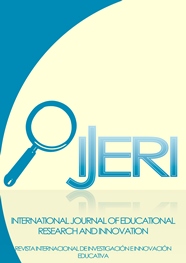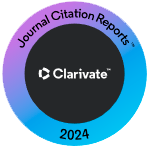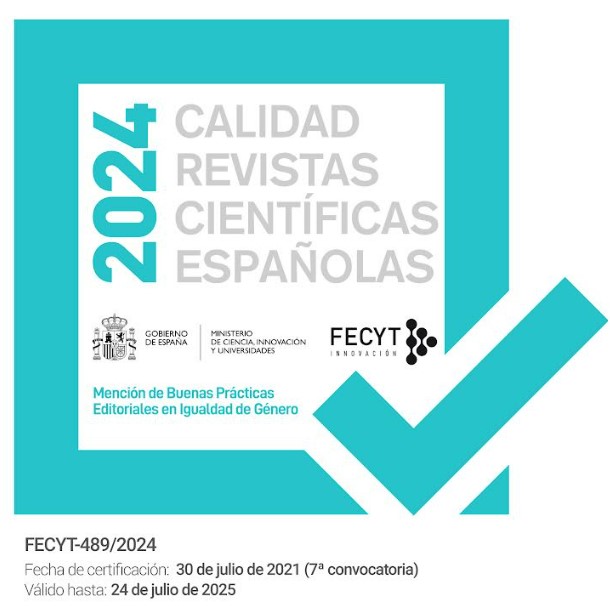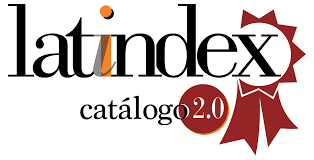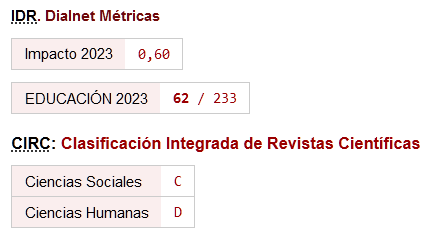How chinese students learn mathematics during the coronavirus pandemic
DOI:
https://doi.org/10.46661/ijeri.4950Keywords:
covid-19, Hawgent dynamic mathematics software, Teaching and Learning, Video LearningAbstract
The Covid-19 pandemic has become a world problem now. The pandemic has affeected a lot of core sectors including the education sector. Students are not able to go to school to study and have to do a social distancing by staying at home. What the government did so that students will still be able to study at home is by developing a long-distance learning media. In this research, we will get to know more about how students in China learn mathematics at home and their learning attitude towards the learning video. This research will use a qualitative and quantitative research method. The researchers gave out questionnaires to 408 students in Guangxi province, China. The researchers also did an interview on the parents and students to know the advantages and disadvantages of using the learning video during this covid-19 pandemic. The research result shows that there is a good student learning attidude towards the learning video. Students feel that the learning video is very interesting yet effective as they were able to understand the concept taught.
Downloads
References
Al-Mashaqbeh, I. F. (2016). IPad in elementary school math learning setting. International Journal of Emerging Technologies in Learning, 11(2), 48–52. https://doi.org/10.3991/ijet.v11i02.5053
Arum, D. P., Kusmayadi, T. A., & Pramudya, I. (2018). Students’ difficulties in probabilistic problem-solving. Journal of Physics: Conference Series, 983(1). https://doi.org/10.1088/1742-6596/983/1/012098
Ashokka, B., Ong, S. Y., Tay, K. H., Hooi, N., Loh, W., Gee, F., & Samarasekera, D. D. (2020). Coordinated responses of academic medical centres to pandemics : Sustaining medical education during COVID-19 Coordinated responses of academic medical centres to pandemics : Sustaining medical education during COVID-19. Medical Teacher, 0(0), 1–10. https://doi.org/10.1080/0142159X.2020.1757634
Badraeni, N., Pamungkas, R. A., Hidayat, W., Rohaeti, E. E., Wijaya, T. T., Sudirman, J. J., & Barat, J. (2020). Analisis kesulitan siswa berdasarkan kemampuan pemahaman matematik dalam mengerjakan soal pada materi bangun ruang sisi datar. 04(01), 247–253.
Bernard, M., & Chotimah, S. (2018). Improve student mathematical reasoning ability with open-ended approach using VBA for powerpoint. AIP Conference Proceedings, 2014(September). https://doi.org/10.1063/1.5054417
Brezovszky, B., McMullen, J., Veermans, K., Hannula-Sormunen, M. M., Rodríguez-Aflecht, G., Pongsakdi, N., … Lehtinen, E. (2019). Effects of a mathematics game-based learning environment on primary school students’ adaptive number knowledge. Computers and Education, 128(August 2018), 63–74. https://doi.org/10.1016/j.compedu.2018.09.011
Cao, W., Fang, Z., Hou, G., Han, M., Xu, X., Dong, J., & Zheng, J. (2020). The psychological impact of the COVID-19 epidemic on college students in China. Psychiatry Research, 287(March), 112934. https://doi.org/10.1016/j.psychres.2020.112934
Chatmaneerungcharoen, S. (2019). Improving Thai Science Teachers’ TPACK through an Innovative Continuing Professional Development Program. Journal of Physics: Conference Series, 1340(1). https://doi.org/10.1088/1742-6596/1340/1/012017
Chotimah, S., Bernard, M., & Wulandari, S. M. (2018). Contextual approach using VBA learning media to improve students’ mathematical displacement and disposition ability. Journal of Physics: Conference Series, 948(1). https://doi.org/10.1088/1742-6596/948/1/012025
Cunhua, L., Ying, Z., Qunzhuang, O., & Wijaya, T. T. (2019). MATHEMATICS COURSE DESIGN BASED ON SIX QUESTIONS COGNITIVE THEORY USING HAWGENT DYNAMIC MATHEMATIC. Journal On Education, 02(01), 36–44.
Daniel, S. J. (2020). Education and the COVID-19 pandemic. Prospects, (0123456789). https://doi.org/10.1007/s11125-020-09464-3
Fachrudin, A. D., Ekawati, R., Kohar, A. W., Widadah, S., Kusumawati, I. B., & Setianingsih, R. (2019). Ancient China history-based task to support students’ geometrical reasoning and mathematical literacy in learning Pythagoras. Journal of Physics: Conference Series, 1417(1). https://doi.org/10.1088/1742-6596/1417/1/012042
Fitri, N. L., & Prahmana, R. C. I. (2019). Misconception in fraction for seventh-grade students. Journal of Physics: Conference Series, 1188(1). https://doi.org/10.1088/1742-6596/1188/1/012031
Hernawati, K., & Jailani. (2019). Mathematics mobile learning with TPACK framework. Journal of Physics: Conference Series, 1321(2). https://doi.org/10.1088/1742-6596/1321/2/022126
Hutajulu, M., Wijaya, T. T., & Hidayat, W. (2019). the Effect of Mathematical Disposition and Learning Motivation on Problem Solving: an Analysis. Infinity Journal, 8(2), 229.
https://doi.org/10.22460/infinity.v8i2.p229-238
Kay, R., & Kletskin, I. (2012). Evaluating the use of problem-based video podcasts to teach mathematics in higher education. Computers and Education, 59(2), 619–627. https://doi.org/10.1016/j.compedu.2012.03.007
Kerres, M. (2020). Against All Odds : Education in Germany Coping with Covid-19.
Khatimah, H., & Sugiman, S. (2019). The effect of problem solving approach to mathematics problem solving ability in fifth grade. Journal of Physics: Conference Series, 1157(4). https://doi.org/10.1088/1742-6596/1157/4/042104
Khotimah, K., Yuwono, I., Rahardjo, S., Universitas, P. M., & Malang, N. (2016). Penerapan Pembelajaran Inkuiri untuk Meningkatkan Hasil Belajar Trigonometri pada Siswa Kelas X. Jurnal Pendidikan, 1(11), 2158–2162.
Miguel-Revilla, D., Martínez-Ferreira, J. M., & Sánchez-Agustí, M. (2020). Assessing the digital competence of educators in social studies: An analysis in initial teacher training using the TPACK-21 model. Australasian Journal of Educational Technology, 36(2), 1–12. https://doi.org/10.14742/ajet.5281
Murphy, M. P. A. (2020). COVID-19 and emergency eLearning: Consequences of the securitization of higher education for post-pandemic pedagogy. Contemporary Security Policy, 0(0), 1–14. https://doi.org/10.1080/13523260.2020.1761749
Mushipe, M., & Ogbonnaya, U. I. (2019). Geogebra and Grade 9 learners’ achievement in linear functions. International Journal of Emerging Technologies in Learning, 14(8), 206–219. https://doi.org/10.3991/ijet.v14i08.9581
Nizarwati, N., Hartono, Y., & Aisyah, N. (2013). Pengembangan Perangkat Pembelajaran Berorientasi Konstruktivisme Untuk Mengajarkan Konsep Perbandingan Trigonometri Siswa Kelas X Sma. Jurnal Pendidikan Matematika, 3(2). https://doi.org/10.22342/jpm.3.2.328
Oner, D. (2020). A virtual internship for developing technological pedagogical content knowledge. Australasian Journal of Educational Technology, 36(2), 27–42. https://doi.org/10.14742/ajet.5192
Peters, M. A., Wang, H., Ogunniran, M. O., Huang, Y., Green, B., & Chunga, J. O. (2020). China’ s Internationalized Higher Education During Covid-19 : Collective Student Autoethnography. Postdigital Science and Education. https://doi.org/10.1007/s42438-020- 00128-1
Redmond, P., & Lock, J. (2019). Secondary pre-service teachers’ perceptions of technological pedagogical content knowledge (TPACK): What do they really think? Australasian Journal of Educational Technology, 35(3), 45–54. https://doi.org/10.14742/ajet.4214
Rohaeti, E. E., Bernard, M., & Primandhika, R. B. (2019). Developing interactive learning media for school level mathematics through open-ended approach aided by visual basic application for excel. Journal on Mathematics Education, 10(1), 59–68. https://doi.org/10.22342/jme.10.1.5391.59-68
Sofyadin, R. T. (2019). Implementation The Problem Based Learning Models To Improve Learning Outcomes Of XI Iis 1 Class 2 State High School Students Baubau Southeast Sulawesi. LA GEOGRAFIA, 17(3).
Suan, L., Ying, Z., & Wijaya, T. T. (2020). Using hawgent dynamic mathematics software in teaching arithmetic operation. International Journal of Education and Learning, 2(1), 25–31. https://doi.org/10.31763/ijele.v2i1.97
Sukaesih, S., Ridlo, S., & Saptono, S. (2019). Development of biology teaching management textbooks based on competency and conservation to maximize Pedagogical and Content Knowledge (PCK) the prospective teachers. Journal of Physics: Conference Series, 1321(3). https://doi.org/10.1088/1742-6596/1321/3/032114
Tezer, M., & Karasel, N. (2010). Attitudes of primary school 2nd and 3rd grade students towards mathematics course. Procedia - Social and Behavioral Sciences, 2(2), 5808–5812. https://doi.org/10.1016/j.sbspro.2010.03.947
Tossavainen, T., & Faarinen, E.-C. (2019). Swedish Fifth and Sixth Graders’ Motivational Values and the Use of ICT in Mathematics Education. Eurasia Journal of Mathematics, Science and Technology Education, 15(12). https://doi.org/10.29333/ejmste/108533
Wijaya, T. T., Purnama, A., & Tanuwijaya, H. (2020). Pengembangan Media Pembelajaran Berdasarkan Konsep Tpack pada Materi Garis dan Sudut Menggunakan Hawgent Dynamic Mathematics Software. JPMI – Jurnal Pembelajaran Matematika Inovatif, 3(3), 205–214. https://doi.org/10.22460/jpmi.v1i3.205-214
Wijaya, T. T., Ying, Z., & Purnama, A. (2020a). The empirical research of hawgent dynamic mathematics technology integrated into teaching. Journal Cendekia: Jurnal Pendidikan Matematika, 04(01), 144–150.
Wijaya, T. T., Ying, Z., & Purnama, A. (2020b). Using Hawgent Dynamic Mathematics Software in Teaching Trigonometry. International Journal of Emerging Technologies in Learning, 15(10), 215–222. https://doi.org/10.3991/ijet.v15i10.13099
Wijaya, T. T., Ying, Z., & Suan, L. (2020). Gender and Self-regulated Learning During COVID-19 Pandemic in Indonesia. Jurnal Basicedu, 4(3), 725–732. https://doi.org/10.31004/basicedu.v4i3.422
Yuliani, T. W., Fuad, Y., & Ekawati, R. (2019). Student’s Multiple Representation in Solving Addition and Subtraction of Fraction Problem. Journal of Physics: Conference Series, 1417(1). https://doi.org/10.1088/1742-6596/1417/1/012050
Zhu, X., & Liu, J. (2020). Education in and After Covid-19: Immediate Responses and Long-Term Visions. Postdigital Science and Education. https://doi.org/10.1007/s42438-020-00126-3
Downloads
Published
How to Cite
Issue
Section
License
Copyright (c) 2020 Tommy Tanu Wijaya

This work is licensed under a Creative Commons Attribution-NonCommercial-NoDerivatives 4.0 International License.

